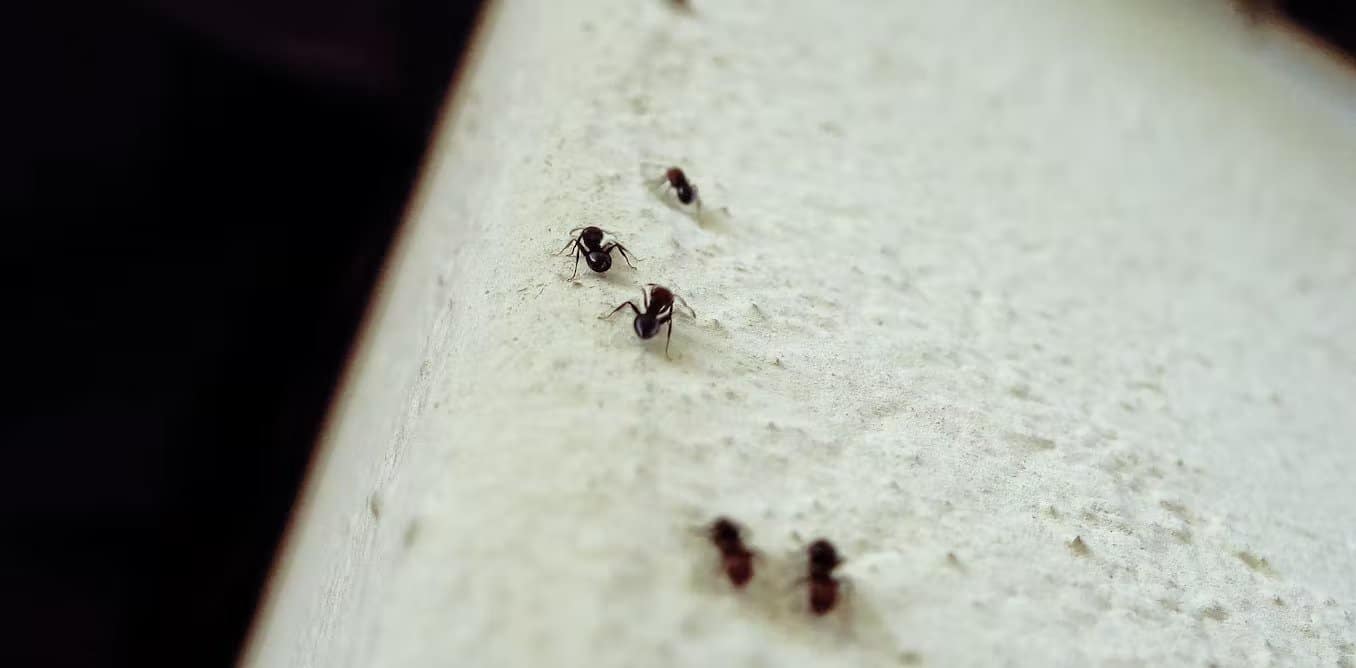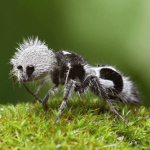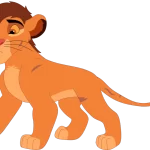Ants are such fascinating insects. And if you’ve tried to observe one’s behavior or maybe a bunch of them, I’m quite sure you’ve already watched them walk up a wall. I once saw an army of them crawling up the wall while carrying something bigger than them.
How amazing is that? And the real question here is: How can they do that?
Well, a biologist has the answers.
But before we understand how an ant’s feet work. Let’s compare it first with a human’s hand. Ant’s feet are quite similar to a human’s hand but are much more complex.
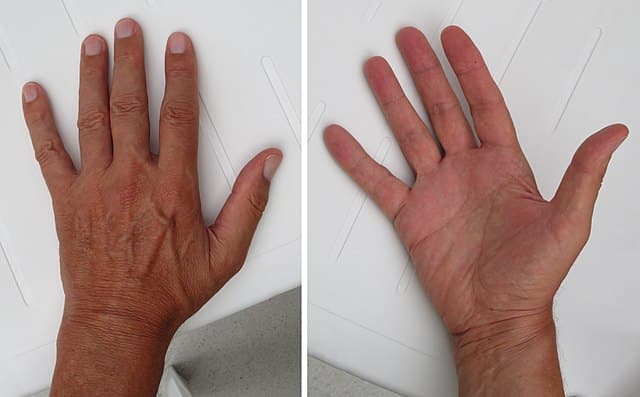
A human’s hand has a palm, which is the broad segment, and one of the hand’s main parts. There, attached are four fingers and an opposable thumb. Opposable means it can be moved freely and independently.
Each finger has three segments, while only two are in a thumb. (Try looking at yours.) Also, a hard nail grows from each finger and thumb’s tips.
Humans have two hands. In contrast, ants have six feet. What makes an ant foot more complex than a human’s hand is the additional set of parts that enhance them.
Unlike humans, ant feet have five joint segments, with a pair of claws at the end of each segment. These claws resemble a cat’s claw and can grip walls. Each segment of the foot also has thick and thin hairs and spines, providing additional grip or traction. These help the ant’s feet stick on textured surfaces like walls, ceilings, or tree bark.
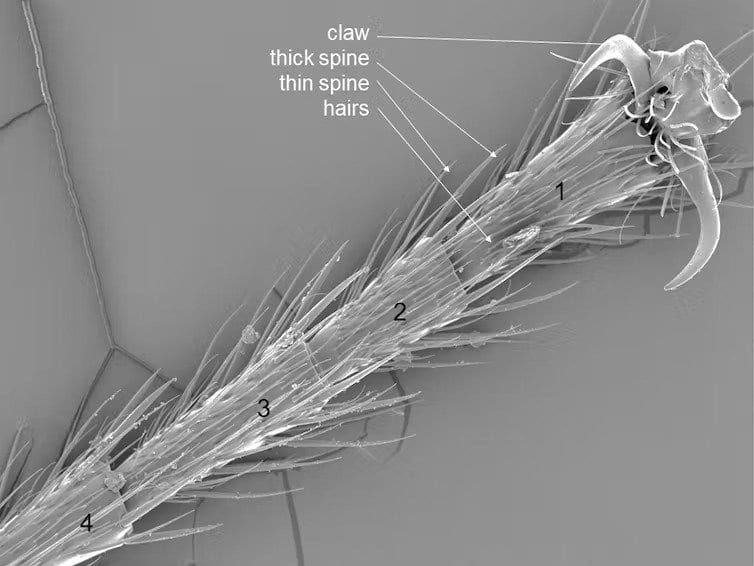
In addition, just as shoes protect our feet, the spines and claws on the ant’s foot segment help protect them from sharp objects and hot pavement.
Now, you might be thinking, what truly makes ant feet different from human hands?
It’s the arolia or the inflatable sticky pads found between the claws at the tip of an ant’s foot. These sticky pads allow ants to crawl on walls, ceilings, glass, or any ultrahard surfaces. These allow them to defy gravity!
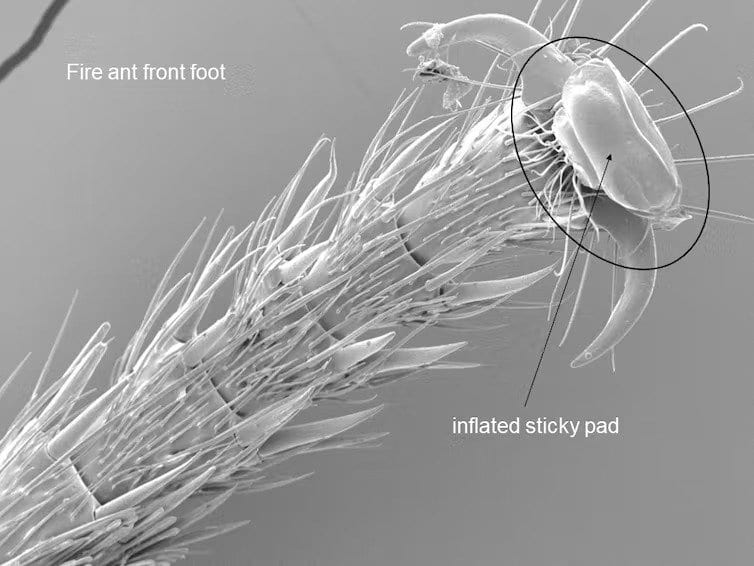
Gravity causes the claws found at the end segment to swing wide and pull back when an ant walks across a ceiling or up a wall. At the same time, the ant’s leg muscles pump body fluid into the arolia (pads) found at the end of its feet. This causes them to inflate. The pumped fluid called hemolymph is similar to our blood that circulates through our body. However, this body fluid in an ant’s body is sticky.
After inflating the pads, some hemolymph leaks outside the pad, allowing the ant to attach to a wall or ceiling. However, most of the fluid is sucked back into the foot and back up the leg. This happens when the leg muscles contract as the ant lifts its foot, sucking the fluid back. This creates a cycle, and the fluid is reused over and over. The leg muscles pump the fluid (or ant’s blood) into the pad, then sucked back wherever an ant walks.
The six balloon-like sticky pads are enough to make the ant stick, defying the pull of gravity on any surface. Ants are also feather-light, so these sticky pads are enough to hold them while walking up the wall or across the ceiling while carrying a large object.
Another thing that makes an ant unique is its walking pattern. It’s unique among six-legged insects, such as butterflies, moths, dragonflies, beetles, flies, and crickets.
In ants, three of their feet are on the ground (front and back left foot with the middle right foot). In contrast, the other three (front and back right feet with the middle left foot) are in the air simultaneously.
So the next time you see an ant, try to look closely and observe how their fascinating features work!
But before I end this post, let me share some amazing fact about ants.
Did you know ants can carry 10 to 50 times their body weight? Maybe even more!
There are 2.5 million times more ants on earth than people (20 quadrillion of them).
The total mass of ants on the planet would actually outweigh all of the world’s wild birds and mammals.
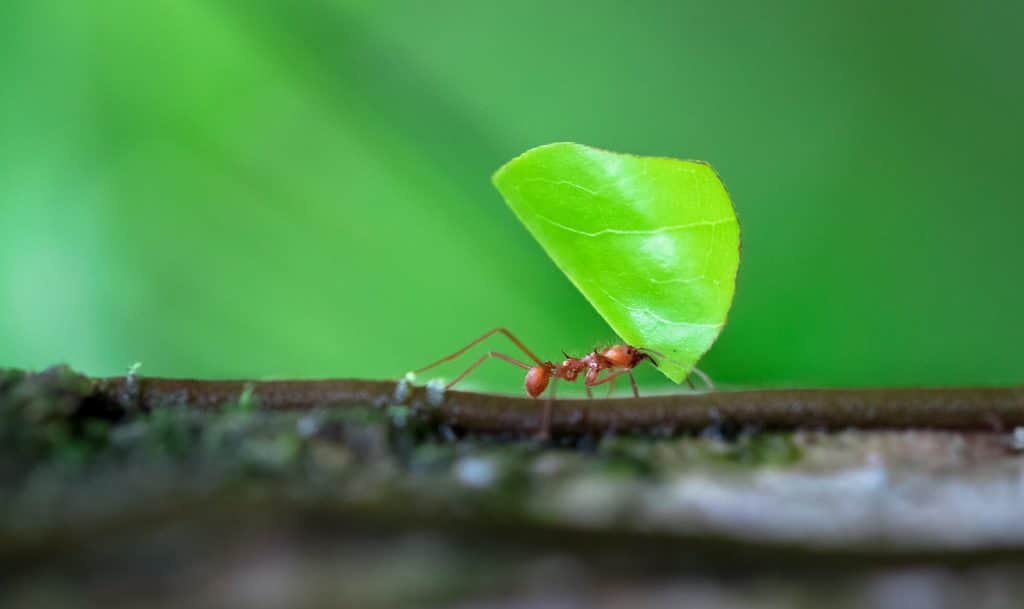
Ants are light and have an exoskeleton with multiple layers. Inside their exoskeletons, their muscles don’t need to support a heavy skeleton, so they can use all their strength to lift other objects instead.
